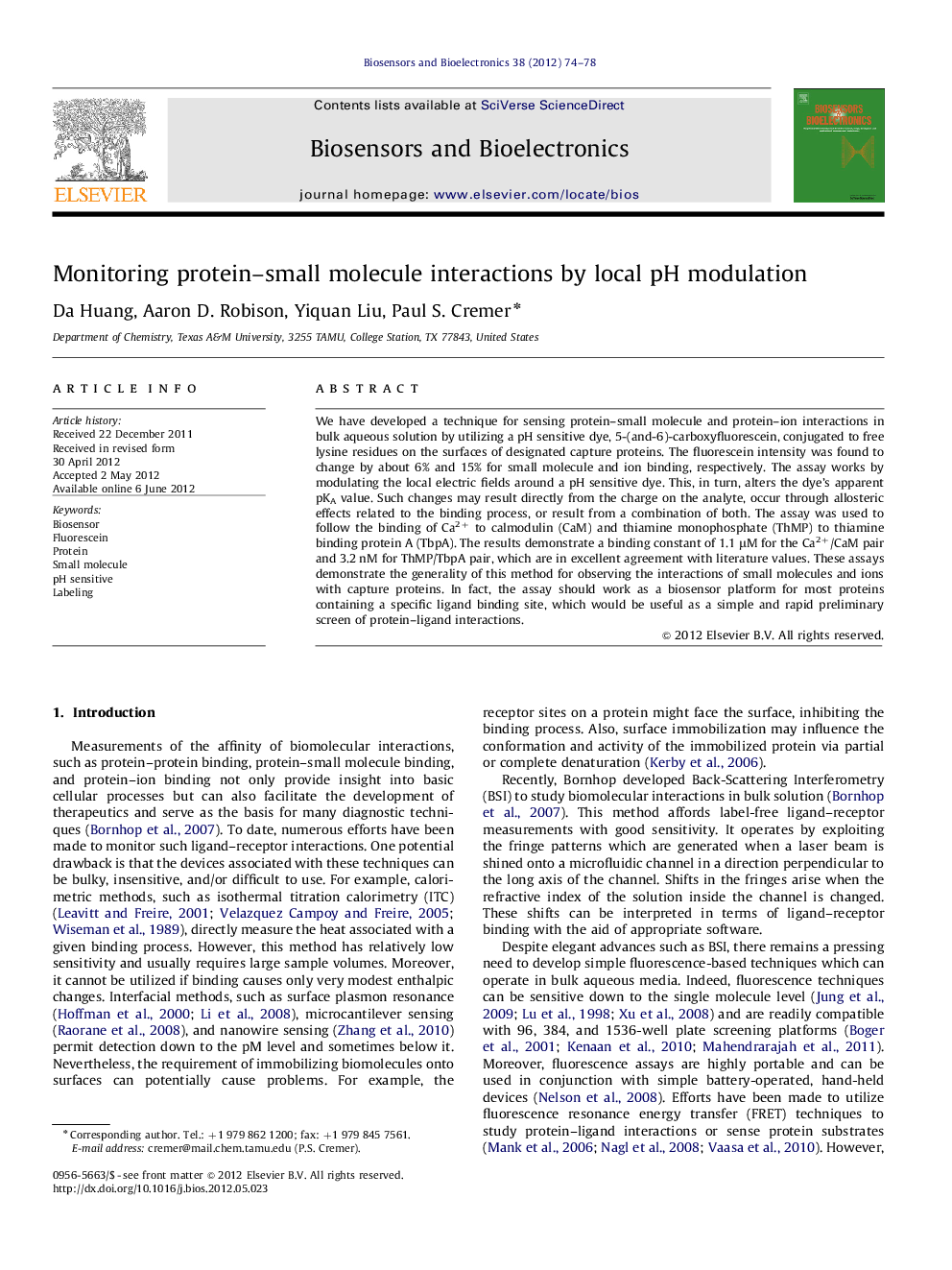| Article ID | Journal | Published Year | Pages | File Type |
|---|---|---|---|---|
| 867271 | Biosensors and Bioelectronics | 2012 | 5 Pages |
We have developed a technique for sensing protein–small molecule and protein–ion interactions in bulk aqueous solution by utilizing a pH sensitive dye, 5-(and-6)-carboxyfluorescein, conjugated to free lysine residues on the surfaces of designated capture proteins. The fluorescein intensity was found to change by about 6% and 15% for small molecule and ion binding, respectively. The assay works by modulating the local electric fields around a pH sensitive dye. This, in turn, alters the dye's apparent pKA value. Such changes may result directly from the charge on the analyte, occur through allosteric effects related to the binding process, or result from a combination of both. The assay was used to follow the binding of Ca2+ to calmodulin (CaM) and thiamine monophosphate (ThMP) to thiamine binding protein A (TbpA). The results demonstrate a binding constant of 1.1 μM for the Ca2+/CaM pair and 3.2 nM for ThMP/TbpA pair, which are in excellent agreement with literature values. These assays demonstrate the generality of this method for observing the interactions of small molecules and ions with capture proteins. In fact, the assay should work as a biosensor platform for most proteins containing a specific ligand binding site, which would be useful as a simple and rapid preliminary screen of protein–ligand interactions.
Graphical abstractFigure optionsDownload full-size imageDownload as PowerPoint slideHighlights► pH modulation sensing detects the binding of small molecules and ions to proteins. ► The optical biosensor developed is a rapid method for screening ligand–receptor binding. ► The method developed is general and can be used with most proteins containing a binding site.
